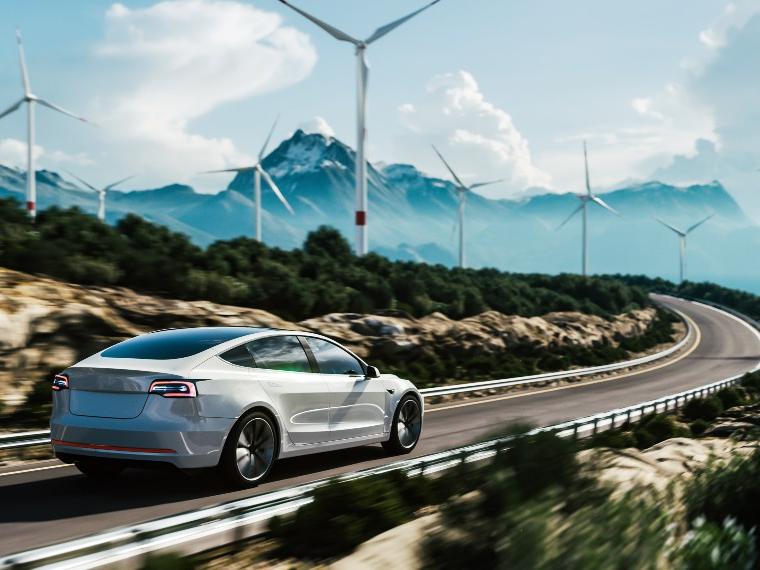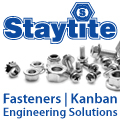
Posted to News on 21st Dec 2021, 08:57
Lighting the way for light-weighting
Industry-wide transition to EVs "demands even greater commitment"

The pursuit of light-weighting has been an ongoing concern in the automobile industry for several decades, points out Stanley Engineered Fastening (SEF). “The need to improve the fuel economy of vehicles with internal combustion engines (ICE) has been driven by consumer preference, cost reduction and the desire to avoid government-imposed financial penalties,” SEF states.
Automotive light-weighting in ICE vehicles has used many different materials strategies, including the use of:
- Thinner, high-strength steel
- Aluminium
- Magnesium
- Polymer composites
- Carbon fibre
- Multi-material design, using a combination of the above materials.
While these strategies have been used successfully in reducing the weight of ICE vehicles, the coming industry-wide transition to electric vehicles (EVs) demands an even greater commitment to electric vehicle light-weighting. “Stanley Engineered Fastening (SEF) has been a key enabler of light-weighting for OEMs and Tiers through our expertise in multi-material joining solutions,” says the company. “These solutions allow the manufacturer to select lighter weight materials and work with SEF to identify new and innovative ways to join them, while retaining strength and durability.”
EVs weigh much more than ICE vehicles
The average weight of an EV is much greater than that of an equivalent ICE vehicle, due to the EV’s extremely heavy battery pack. In addition, the energy density of batteries is much less than that of the fuels that power ICE vehicles. Reducing the overall weight of an EV can pay great dividends throughout its lifecycle. These benefits include:
- Extended range with same battery size or similar range with a smaller battery
- Suspension and braking components can be lightened, further reducing weight
- Improved acceleration
- Better handling
- Shorter braking distances
- Reduced tyre wear
- Higher cargo capacity
- The EV battery pack itself can also be made lighter.
The heavy battery pack in an EV is typically placed under the vehicle’s floor to keep its centre of gravity as low as possible. Many EVs also use the battery pack as a structural member of the chassis. By using lightweight materials for items such as the battery enclosure and its fasteners, the overall weight of the battery pack assembly can be reduced, further reducing the overall weight of the typical EV.
Battery pack weight factors
The current lithium-based battery chemistries result in extremely heavy battery packs that are filled with hazardous chemicals. Manufacturing efficiency as well as transportation safety dictate that battery packs should be produced as close as possible to EV assembly sites. “Many countries are providing incentives for local battery manufacturing and assembly. Stanley Engineered Fastening’s wide global footprint allows us to create the same product lines in many regions. SEF can also incorporate the use of highly engineered polymers, which is quite uncommon.”
Use of plastic parts growing
Fibre-reinforced plastic polymers can also help greatly in the light-weighting of EVs. Certain types of these materials have been developed to be flame retardant and resist high temperatures. This allows them to be used as structural components in and around an EV’s high-heat areas, including its battery packs, motors and inverters.
“SEF’s Integra precision engineered plastic fasteners and components support the sustainable development of electric vehicles,” says the company. “The highly engineered Integra product range includes lightweight parts for fluid routing, electrical harnesses, trim and panel fixations, functional components, battery pack solutions and more, and employs production strategies with the lowest possible material requirement.”
Shift from metal to plastics in battery pack production
The battery enclosure in an EV presents many engineering challenges above and beyond the electric vehicle light-weighting aspect. It includes a battery management system for heating and cooling the battery as necessary. The enclosure may also need to shield the batteries from EMI and RFI. It may be required to withstand pressure from both within and without. Some enclosures may also function as structural members of the EV’s chassis.
While many battery enclosures have been made of aluminium, lighter-weight composite plastics are very well-suited for this use. Precision moulding can produce a thinner, lighter enclosure with fewer parts that also has superior sealing capabilities. Flame-retardant formulations can help to contain thermal runaway in the event of an accident.
Need for specialised fastening solutions
Using a variety of different materials for the various parts of a vehicle’s subassemblies has come into increased usage. Mixing different types of steels with aluminium, magnesium, plastics and composites allows each component to be made of the material that best suits its purpose.
“Traditional fastening methods are not suitable for bonding these dissimilar parts to each other,” says SEF. “As the no-hole fastening and mechanical joining technology leader, Tucker stud welding and self-pierce riveting solutions can be used to reliably connect these materials to each other with ease and efficiency. And with the new Tucker Cleanjet, you can prep your lightweight aluminium material by spot cleaning the surface just prior to the welding process for superior joint strength.”
At the stud level, lightweight steel studs were created specifically for modern cars built from various grades and thicknesses of steel. “This revolutionary stud offers up to 70% less spatter, increased equipment life, longer maintenance cycles, better fit and better appearance,” adds SEF. “Communised studs and part numbers using the same stud design minimises equipment spare part needs, which reduces complexity and achieves a lower TCO.”
Adhesive bonding increasingly important to EVs
Today’s structural adhesives can be used to bond virtually any materials to each other. “Stanley Industrial’s AFS B.R.I.A.R. (Adhesive Fastening System using Bonding with Radiation-curing Interlock and Anaerobic Reaction) uses both anaerobic and UV-light curing to securely bond studs to all types of steel (including powder coated), as well as aluminium, aluminium/magnesium alloys, CFRP, glass, sandwich materials, ceramics and many more. AFS B.R.I.A.R. achieves 50% strength after 30 minutes and 90% strength in three hours. AFS B.R.I.A.R. is ideal for use in battery pack assembly, along with many other aspects of the EV assembly process.”
The more that can be done to reduce the weight of electric vehicles, the faster they will find consumer acceptance in today’s marketplace, states SEF, concluding: “electric vehicle light-weighting can be a major contributor to reduced cost, improved range, increased performance, and more efficient assembly of the current and upcoming generations of EVs.”





